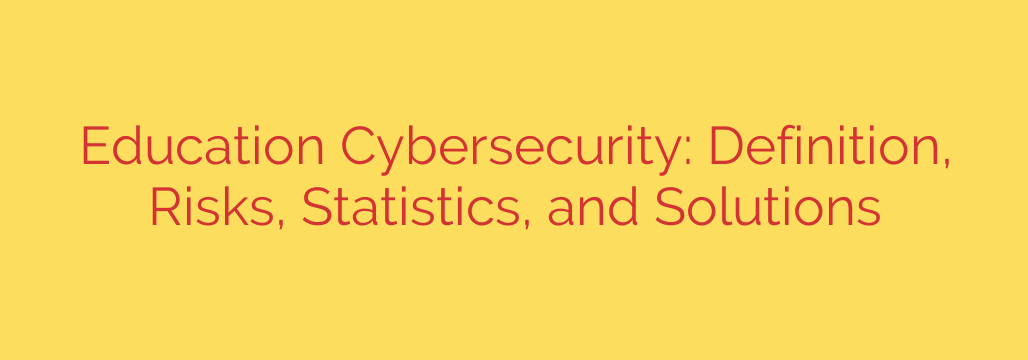
Protecting Our Classrooms: Why Cybersecurity is Essential for Education
In today’s connected world, schools, colleges, and universities are facing a growing digital threat. While technology opens incredible possibilities for learning and administration, it also exposes sensitive data and critical systems to cyberattacks. This focus on safeguarding digital environments within the academic sphere is known as education cybersecurity. It’s no longer just an IT issue; it’s fundamental to protecting students, staff, and the future of learning itself.
Education institutions hold a wealth of valuable information. This includes not just administrative data like finances and HR records, but also highly sensitive personal information on students and staff – from contact details and academic performance to health records and financial aid information. Furthermore, schools rely heavily on networked systems for everything from grading and communication to online learning platforms. This combination of valuable data and interconnected systems makes the education sector a prime target for cybercriminals.
The risks facing education are significant and varied. Some of the most common threats include:
- Ransomware Attacks: Malicious software that encrypts data, holding it hostage until a ransom is paid. These attacks can cripple school operations, disrupting classes and administrative functions for days or even weeks.
- Phishing Scams: Attempts to trick users into revealing sensitive information (like login credentials) or downloading malware through deceptive emails or messages. Students and staff alike can fall victim to these sophisticated lures.
- Data Breaches: Unauthorized access to sensitive student or staff data, potentially leading to identity theft, privacy violations, and significant legal and reputational damage.
- DDoS Attacks: Flooding networks with traffic to make systems unavailable, disrupting online learning, communication, and access to resources.
- Insider Threats: Accidental or malicious actions by individuals within the institution who misuse their access to data or systems.
The consequences of successful cyberattacks in education are far-reaching. Beyond the immediate financial costs of recovery, they can lead to loss of instructional time, erosion of trust among parents and the community, and long-term damage to an institution’s reputation. The disruption to learning environments can be particularly devastating for students.
Fortunately, there are effective strategies that educational institutions can implement to bolster their cyber defenses:
- Comprehensive Cybersecurity Training: Regularly educating staff, students, and parents about common threats like phishing and safe online practices is crucial. A well-informed community is the first line of defense.
- Implementing Strong Access Controls: Using multi-factor authentication (MFA) for logins, enforcing strong password policies, and limiting user access to only what is necessary reduces the risk of unauthorized entry.
- Regular Software Updates and Patching: Keeping operating systems, applications, and security software up-to-date closes known vulnerabilities that attackers exploit.
- Robust Backup and Recovery Plans: Regularly backing up critical data and systems offline ensures that institutions can restore operations quickly in the event of a ransomware attack or data loss.
- Network Segmentation: Dividing the network into smaller, isolated segments can contain the damage of a breach, preventing attackers from moving freely across the entire system.
- Incident Response Planning: Having a clear, practiced plan for how to react to a cyber incident minimizes panic and allows for a swift, effective response to contain the damage and recover.
- Investing in Security Technologies: Deploying firewalls, intrusion detection/prevention systems, and endpoint protection can provide essential layers of defense.
Protecting educational environments from cyber threats requires a proactive and multi-layered approach. By understanding the risks, investing in appropriate technology and training, and fostering a culture of cybersecurity awareness, institutions can better safeguard their data, systems, and the valuable learning experiences they provide. The effort to enhance education cybersecurity is an investment in the safety and continuity of learning for everyone.
Source: https://heimdalsecurity.com/blog/cybersecurity-in-education/








